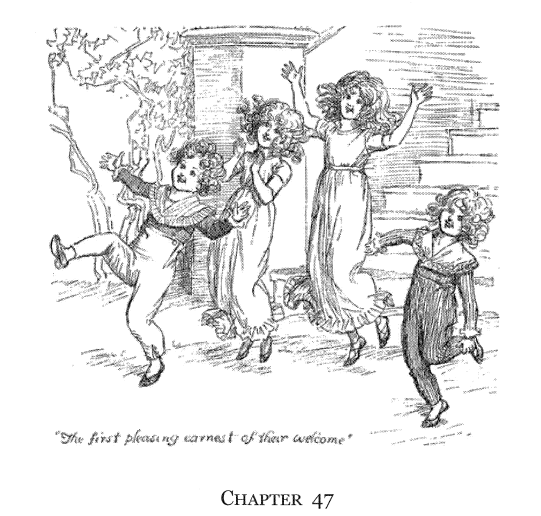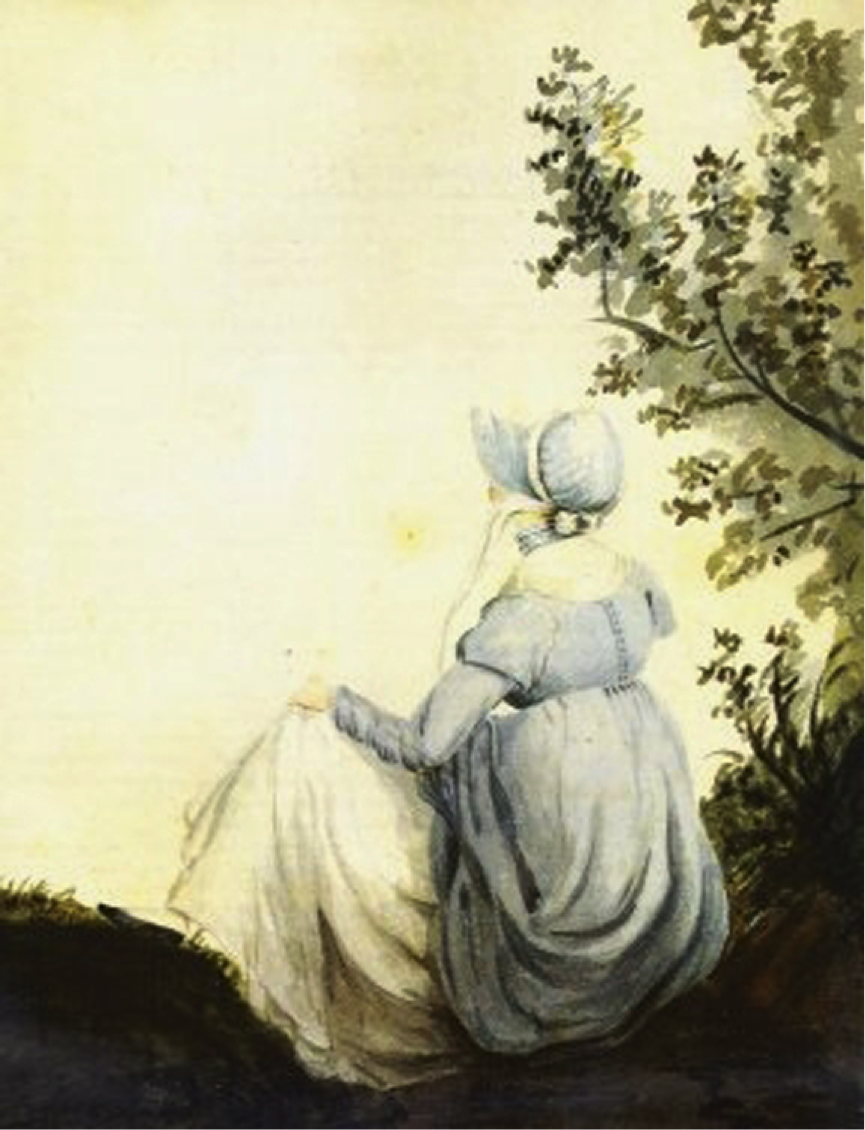“While Sir William was with them, Mr. Collins devoted his time to driving him out in the gig, and showing him the country”–Pride and Prejudice, chapter 30
I’ve been sharing with you some of the joys of Hugh Thomson’s “Peacock” Pride and Prejudice. Today we’ll take a final look at another aspect of daily life, transportation, with a little peek also at children’s clothing.
Transportation
All these vehicles, which we no longer use today, can be very confusing. Hugh Thomson, though, drew delightfully clear pictures of Austen-era transportation:


A hackney coach is “a four-wheeled coach for hire, typically drawn by two horses and with seating for six passengers” (OED). A chaise might be a light open carriage for one or two passengers, or a closed travel carriage for one to three passengers; the driver sat on one of the horses. This looks too small to be a hackney coach so is probably a traveling chaise.

“The Post” was “a person who travels express with letters, dispatches, etc., especially along a fixed route” (OED). The postman did not bring the hoped-for letter from Mr. Bennet, telling the family whether or not he had found Lydia.
Children’s Clothes and the Joys of Returning Home
Finally, these adorable children are welcoming their parents home from a long trip:

The little boys in the picture are wearing “skeleton suits,” one-piece outfits worn by boys from about age 3 to 9. The girls are in simple muslin dresses. Their joy is delightful!
Do you ever wish you lived back in Jane Austen’s time? I think one of the main drawbacks would be transportation. It was very expensive to travel, so most people never left their villages. Those who did travel had to face the dangers of bad roads, carriage overturns, accidents, and even highwaymen robbing and killing travelers. However, they moved slowly enough to enjoy nature and see the countryside, which we often miss today. What would you have enjoyed, and not enjoyed, about living in Austen’s England?
Definitions are from the Oxford English Dictionary online.
Earlier posts
Mr. Collins, Country Clergyman
Note: Hugh Thomson’s illustrations are in the public domain.



I spent my entire childhood wishing I had been born in an earlier time. Of course the books we children were given only dealt with the appealing and exotic. I have since determined that I would have died an early and painful death from dental issues alone, never mind a difficult first childbirth. Re-enacting is the way to go for those who feel attracted to previous ages.
LikeLike
You’re right, JoAnn, there would have been so many hard things about living 200 years ago. And, most of us would probably have been in the lower classes or servants, who really had it tough! But, there are also many lovely things to understand and to imagine. 🙂
LikeLike